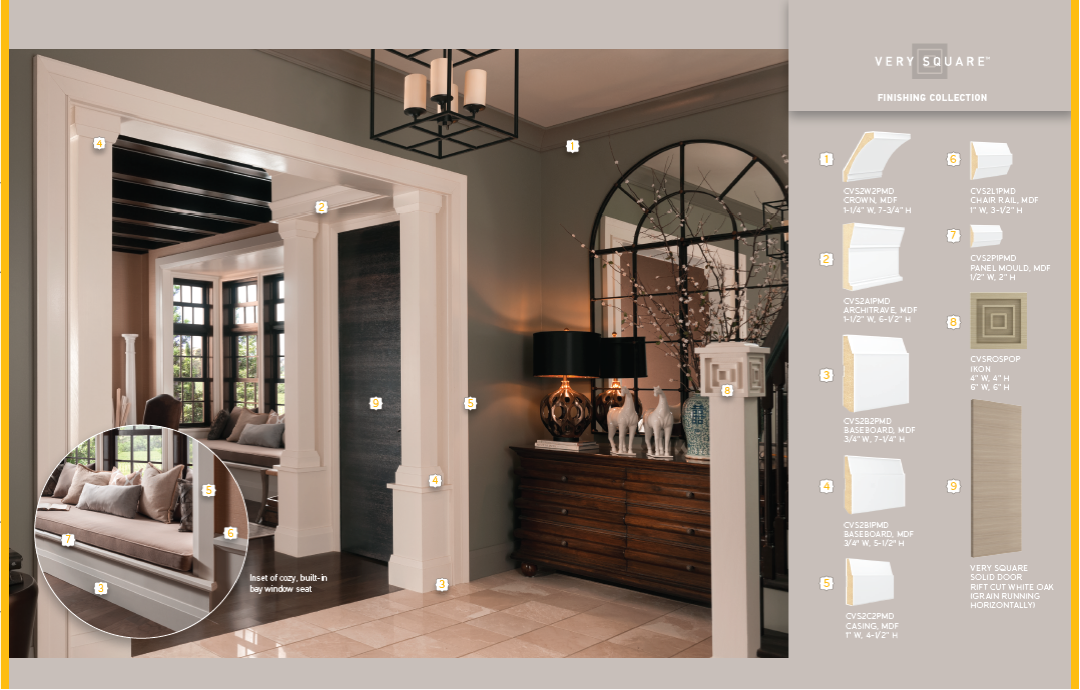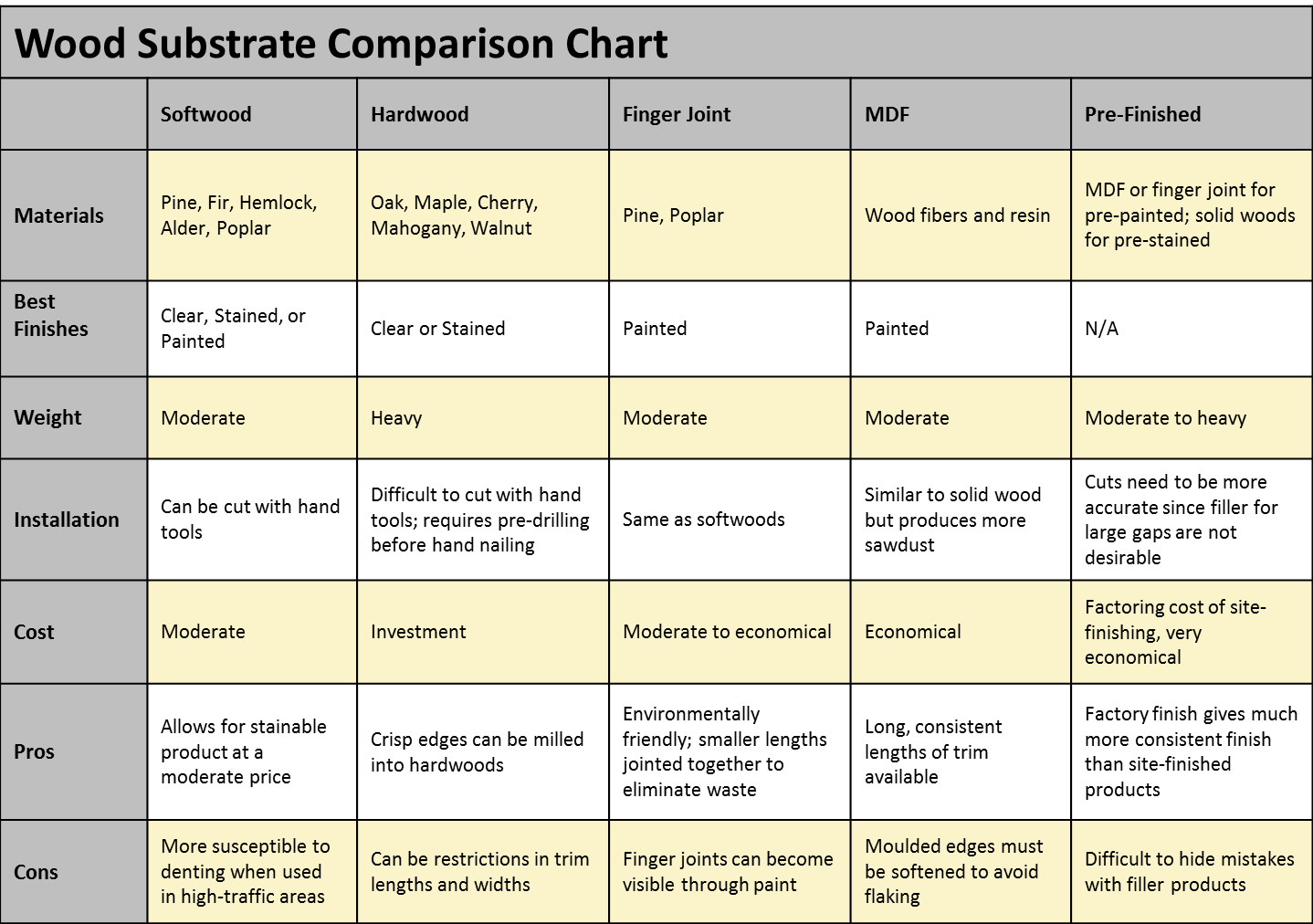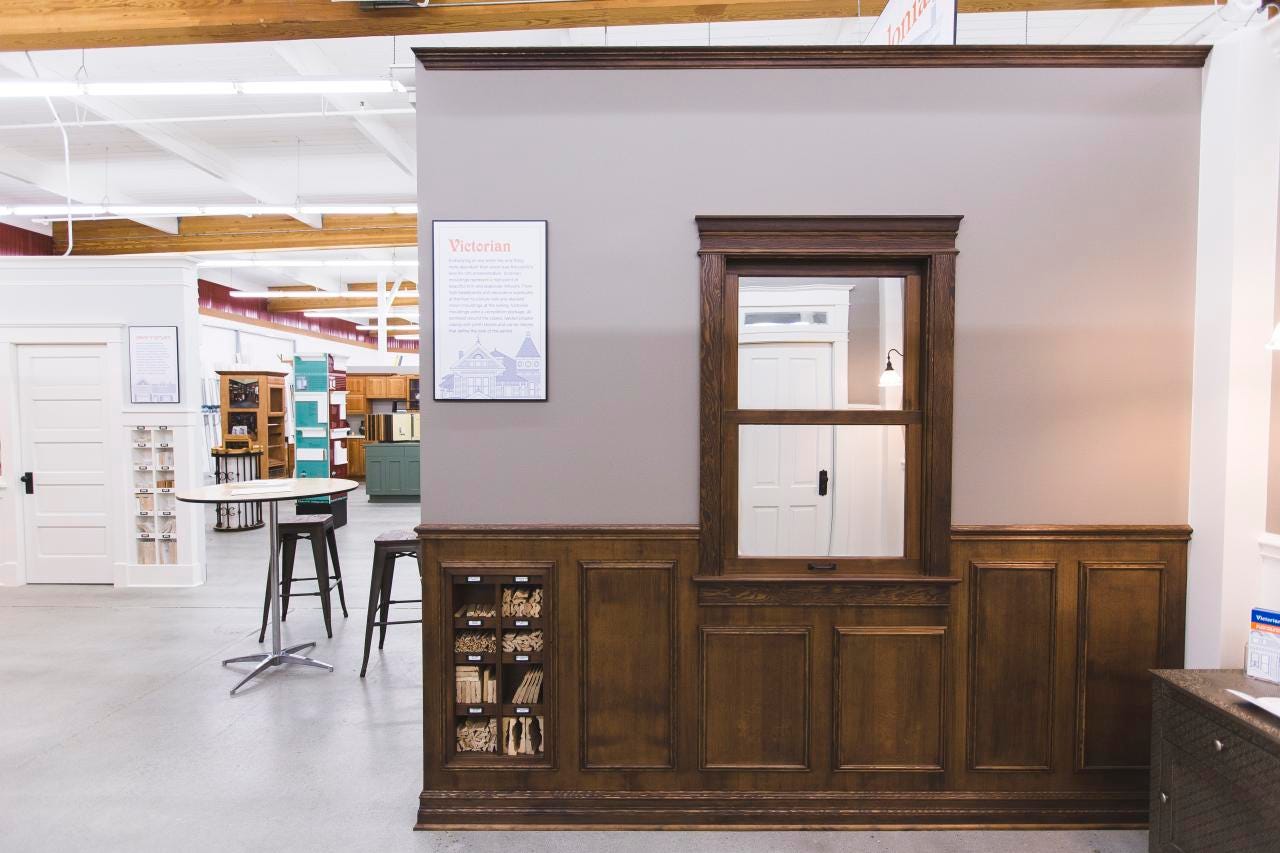
At Dunn Lumber, the category of interior finishings was primarily confined to moulding for many years. (You may also see it referred to as "molding.") We used to buy the majority of our wood moulding by the railcar (yes, railcar), from a supplier in California. The smallest guy on the crew got to crawl up into the boxcar on his stomach and start sliding bundles down one at a time to a person on the ground, until he could create enough room to do the task in a more upright position. Wow, how things have changed.
This is the first in a series of three posts we'll publish that cover the basics of interior finishings and trim. In this post from our longtime vendor partner, Metrie™, you'll learn about interior finishings, how to select moulding, and what to keep in mind when choosing trim for your home.
What are interior finishings?
Interior finishings include trim or moulding, wall treatments, interior doors, posts and columns, stairway systems, and ceiling treatments. This decor category is often not top-of-mind with homeowners renovating or redecorating their home, but their use has a significant impact on the overall look and feel of the space.
While many interior finishing products serve functional purposes, they also have the aesthetic impact to greatly transform a room from good to grand.

How to Select Interior Finishings
When making selections, it's important that the interior finishings chosen create a flow throughout the entire home. They help establish the overall in the home's interior. For example, trim, or moulding, that has bold and numerous curves can suggest a European or Victorian style, while more linear, sharp angled profiles may lean to a more craftsman or mission style. Trim is typically used in every room of the home and should be selected early in the building or renovation process to set the visual tone.
Some considerations when selecting trim:
- Material: There are a number of options from solid wood species, to MDF, to faux wood, and flexible moulding options. Each material has particular features that make it the right selection based on application and the finished result desired. (See the chart below for more details.)
- Size: The selection should be based largely on the ceiling height of the room. In many cases, there are complimentary profiles that can be used in a home with varying ceiling heights. So the size may vary, but the remains consistent room to room.
- Style: The options are nearly endless when it comes to moulding profiles. It is important to think about not only the of the inside of the home, but the outside as well. If the home is historic in structure, ultra-modern trim may not be an ideal selection. However, is subjective and it's important to consider the lifestyle, personalities, and design preferences of those living in the home.
- Application: Trim can be used in a number of non-traditional ways, such as creating door headers, wall treatments, or frames, and can be layered or built-up to for a unique or custom look. Planning the design in advance can ensure all of the necessary products are ordered at one time, reducing downtime in the project.
Material Selection & Use
Understanding material substrates and selecting the right one for your project is a key step in a successful installation and end result.
This chart references the most common wood substrates available, and has details to help you choose the right substrate to meet the demands of the project and the budget.

This chart offers important details related to moulding made from substrates other than wood. Again, understanding the material difference will help you select the right type of material for your project.




